Duterte deal with China over Scarborough Shoal exposes US failure
By Ashley Townshend
Updated 1223 GMT (2023 HKT) October 31, 2016
Philippine President expresses "regret" over comments
Story highlights
- Beijing serious about improving ties with Manila at Washington's expense
- Deal likely to to add momentum to rapprochement between Beijing and Manila
Ashley Townshend is a Research Fellow at the United States Studies Centre at the University of Sydney, Australia. He tweets @ashleytownshend. The views expressed here are solely his.
(CNN)Controversial Philippines president Rodrigo Duterte appears to have secured a major concession from Beijing in the South China Sea.
It happened quietly last week when China suddenly lifted its four-year blockade of the Scarborough Shoal, allowing Filipino fishermen to freely access the shoal's plentiful waters.
If it lasts, this will be chalked up as a victory for Duterte's pivot to China and a geopolitical setback for the United States.By cozying up to China and trash-talking America, Duterte has achieved something that Washington couldn't deliver: a peaceful resolution to the Scarborough Shoal standoff.The significance of this can't be overstated. Back in 2012, China seized the Scarborough Shoal by deploying powerful coastguard cutters to evict the Philippine navy. Wary, not unjustly, of being drawn into a conflict with China over uninhabited rocks, Washington chose not to clarify whether its Mutual Defense Treaty with the Philippines would trigger an American military response. Beijing sensed Washington's lack of resolve.So when the US brokered a deal in which the Philippines and China agreed to withdraw their ships, Beijing simply reneged on its part. China kept the blockade intact, which its coastguard enforced by chasing and firing water cannons at approaching Filipino vessels.For the next four years, Washington failed to craft an effective strategy to get Chinese ships out of the shoal.
- Beijing serious about improving ties with Manila at Washington's expense
- Deal likely to to add momentum to rapprochement between Beijing and Manila
Ashley Townshend is a Research Fellow at the United States Studies Centre at the University of Sydney, Australia. He tweets @ashleytownshend. The views expressed here are solely his.
(CNN)Controversial Philippines president Rodrigo Duterte appears to have secured a major concession from Beijing in the South China Sea.
Washington's failed strategy
Despite all America's military might, threatening to use it at Scarborough just wouldn't have been credible -- a dilemma that still lies at the heart of Washington's inability to rollback Beijing's South China Sea outposts.Duterte, by contrast, appears to have used the one form of leverage Washington didn't have: the allure of close relations with a US ally.His explosive talk of "separation" with America, realignment with China, and an "independent" foreign policy struck exactly the tone Beijing wanted to hear. His readiness to enter into bilateral negotiations with Beijing over the South China Sea also brought Manila in line with a core Chinese demand.Lifting the Scarborough blockade, then, is China's gift to Duterte for his sustained attack on America.While it's not clear what concessions, if any, Duterte has granted in the process, for now this is overwhelmingly good news for most Filipinos. Photos: Rodrigo Duterte has said some outrageous things.Show Caption6 of 11
Photos: Rodrigo Duterte has said some outrageous things.Show Caption6 of 11 Photos: Rodrigo Duterte has said some outrageous things.Show Caption7 of 11
Photos: Rodrigo Duterte has said some outrageous things.Show Caption7 of 11 Photos: Rodrigo Duterte has said some outrageous things.Show Caption8 of 11
Photos: Rodrigo Duterte has said some outrageous things.Show Caption8 of 11 Photos: Rodrigo Duterte has said some outrageous things.Show Caption9 of 11
Photos: Rodrigo Duterte has said some outrageous things.Show Caption9 of 11 Photos: Rodrigo Duterte has said some outrageous things.Show Caption10 of 11
Photos: Rodrigo Duterte has said some outrageous things.Show Caption10 of 11 Photos: Rodrigo Duterte has said some outrageous things.Show Caption11 of 11
Photos: Rodrigo Duterte has said some outrageous things.Show Caption11 of 11 Photos: Rodrigo Duterte has said some outrageous things.Show Caption1 of 11
Photos: Rodrigo Duterte has said some outrageous things.Show Caption1 of 11 Photos: Rodrigo Duterte has said some outrageous things.Show Caption2 of 11
Photos: Rodrigo Duterte has said some outrageous things.Show Caption2 of 11 Photos: Rodrigo Duterte has said some outrageous things.Show Caption3 of 11
Photos: Rodrigo Duterte has said some outrageous things.Show Caption3 of 11 Photos: Rodrigo Duterte has said some outrageous things.Show Caption4 of 11
Photos: Rodrigo Duterte has said some outrageous things.Show Caption4 of 11 Photos: Rodrigo Duterte has said some outrageous things.Show Caption5 of 11
Photos: Rodrigo Duterte has said some outrageous things.Show Caption5 of 11 Photos: Rodrigo Duterte has said some outrageous things.Show Caption6 of 11
Photos: Rodrigo Duterte has said some outrageous things.Show Caption6 of 11 Photos: Rodrigo Duterte has said some outrageous things.Show Caption7 of 11
Photos: Rodrigo Duterte has said some outrageous things.Show Caption7 of 11 Photos: Rodrigo Duterte has said some outrageous things.Show Caption8 of 11
Photos: Rodrigo Duterte has said some outrageous things.Show Caption8 of 11 Photos: Rodrigo Duterte has said some outrageous things.Show Caption9 of 11
Photos: Rodrigo Duterte has said some outrageous things.Show Caption9 of 11 Photos: Rodrigo Duterte has said some outrageous things.Show Caption10 of 11
Photos: Rodrigo Duterte has said some outrageous things.Show Caption10 of 11 Photos: Rodrigo Duterte has said some outrageous things.Show Caption11 of 11
Photos: Rodrigo Duterte has said some outrageous things.Show Caption11 of 11 Photos: Rodrigo Duterte has said some outrageous things.Show Caption1 of 11
Photos: Rodrigo Duterte has said some outrageous things.Show Caption1 of 11 Photos: Rodrigo Duterte has said some outrageous things.Show Caption2 of 11
Photos: Rodrigo Duterte has said some outrageous things.Show Caption2 of 11 Photos: Rodrigo Duterte has said some outrageous things.Show Caption3 of 11
Photos: Rodrigo Duterte has said some outrageous things.Show Caption3 of 11 Photos: Rodrigo Duterte has said some outrageous things.Show Caption4 of 11
Photos: Rodrigo Duterte has said some outrageous things.Show Caption4 of 11 Photos: Rodrigo Duterte has said some outrageous things.Show Caption5 of 11
Photos: Rodrigo Duterte has said some outrageous things.Show Caption5 of 11 Photos: Rodrigo Duterte has said some outrageous things.Show Caption6 of 11
Photos: Rodrigo Duterte has said some outrageous things.Show Caption6 of 11























China's diplomatic masterstroke
Beijing, in all this, has pulled off a diplomatic masterstroke.It has earned goodwill from Manila and wedged US-Philippines relations simply by ending its illegal activities.What's more, it hasn't really given much away.Beijing hasn't dropped its claims to the Scarborough Shoal, nor have its own fishermen been forced to leave. It hasn't even withdrawn its coastguard vessels which, though well-behaved, continue to patrol the shoal.South China Sea: Full coverageIn fact, by sharing fishing access at the shoal, Beijing has surreptitiously brought itself in line with the Permanent Court of Arbitration's July 12 ruling on the South China Sea, even as it continues to reject the legality of the verdict.China has nevertheless granted some concessions.Having reopened Scarborough to Filipino vessels, it will be very difficult for Chinese dredgers to undertake land reclamation.To do so would undercut the political rapprochement that China is trying so hard to foster with the Philippines.Accordingly, Beijing's purported aim of turning the shoal into a military airstrip within missile range of Manila has, in effect, been put on ice.China's ability to coerce the Philippines has also been reduced.Although Beijing can easily reinstate the blockade, this would similarly undercut its political objectives. In other words: the one-off lifting of the blockade has removed an ongoing source of Chinese leverage over Manila.This suggests Beijing is serious about making actual compromises to improve its ties with Manila at Washington's expense.

How this hurts the US
How much this hurts America is a mixed bag.A fishing deal between Beijing and Manila doesn't necessarily undercut Washington's bottom line that disputes be resolved peacefully in accordance with international law.Unless President Duterte has compromised on the Philippines' sovereign rights at Scarborough -- an impeachable offence under Filipino law -- any accord on the lifting of China's blockade is a positive development.Duterte's victory, in fact, has potentially removed a major headache for Washington.Over the past few months, Scarborough Shoal had again been shaping up as a pivotal test of wills for the US and China, with Washington deploying sophisticated military hardware to the Philippines in a quiet attempt to deter Beijing from militarizing the reef.Given America's track record of weakness and warming China-Philippines ties, Beijing may well have called Washington's bluff once again. It's thus a lucky save for US policy that a Scarborough deal has put off Chinese militarization for now.
Showdown in the South China Sea: Timeline
1947
Nine-dash line
January 1974
China occupies the Paracel Islands
March 14, 1988
Deadly skirmish
November 4, 2002
Declaration of conduct
May 2005 — 2006
Taiwan builds airstrip
May 2009
China makes submission to U.N.
November 2012
New passports
January 2013
Philippines vs. China
April 2013
Tourists arrive
May 2, 2014 — July 15, 2014
Oil rig dispute
November 2014
Airstrip-capable island
February 2015
Island building
May 2015
U.S. plane warned
June 16, 2015
China says reclamation "almost finished"
October 26, 2015 — January 30, 2016
U.S. tests freedom of navigation
January 2016
Test flights
February 2016
Missiles deployed
Nine-dash line
China occupies the Paracel Islands
Deadly skirmish
Declaration of conduct
Taiwan builds airstrip
China makes submission to U.N.
New passports
Philippines vs. China
Tourists arrive
Oil rig dispute
Airstrip-capable island
Island building
U.S. plane warned
China says reclamation "almost finished"
U.S. tests freedom of navigation
Test flights
Missiles deployed
Washington's hesitancy to stand up to Beijing
The South China Sea is home to a messy maritime dispute. China, Malaysia, the Philippines, Taiwan and Vietnam all dispute sovereignty of several island chains and nearby waters.
China publishes a map outlining its claims in the South China Sea. The map becomes the basis of the "nine-dash line" -- the foundation of China's current territorial claims.
China builds a military installation on Woody Island with an airstrip and artificial harbor. It has occupied all the Paracel Islands since 1974, when Chinese troops seized a South Vietnamese garrison. The islands are also claimed by Taiwan and Vietnam.
LOADINGChinese and Vietnamese sailors square off over Johnson South Reef as the two countries scramble for a physical presence in the Spratlys. Vietnam says 64 of its soldiers were killed in the battle.
LOADINGChina and members of ASEAN sign a "Declaration on the Conduct of Parties in the South China Sea." The accord eases tensions but falls short of a legally binding code of conduct.
Taiwan builds a a 1,200 meter runway at Itu Aba island, the only island it controls in the South China Sea and the largest naturally occuring island in the Spratlys.
In a submission to the United Nations, China claims sovereignty over the islands in the South China Sea and adjacent waters. To support its claim, it attaches a map of the "nine-dash line" -- its claimed territorial waters that extend hundreds of miles to the south and east of its island province of Hainan. Vietnam and Malaysia object.
LOADINGThe Philippines and Vietnam condemn a new Chinese passport design that contains a map of China's disputed maritime claims in the South China Sea.
The Philippines files a case with the Permanent Court of Arbitration in The Hague. It seeks a ruling on its right to exploit the South China Sea waters in its 200-nautical mile exclusive economic zone (EEZ) as allowed under the United Nations Convention on the Law of the Sea (UNCLOS). Beijing refuses to participate.
LOADINGChina says it has started allowing tourists to visit Woody Island in the Paracels as part of a cruise.
Chinese oil company CNPC moves an oil exploration rig near to Triton Island in the Paracels. Anti-Chinese riots erupt in Vietnam, causing damage to businesses. Vietnamese vessels approach the rig but are stopped by Chinese boats. The standoff ends when China moves the rig on July 15, a month earlier than planned.
LOADINGSatellite images analyzed by IHS Jane's Defence Weekly suggest China is building an island at Fiery Cross Reef in the Spratlys big enough for an airstrip.
LOADINGSatellite imagery shows China building a "significant presence" in the Spratlys, reclaiming land at a total of five sites and building airstrips. IHS Jane's Defence Weekly describes it as a "methodical, well-planned campaign" to create a chain of air and sea capable "fortresses."
LOADINGChina's Navy warns a U.S. surveillance plane carrying a CNN crew eight times as it flies over man-made islands in the Spratlys.
China says it has "almost completed" land reclamation in the South China Sea. According to the U.S., China has reclaimed some 3,000 acres of land since the beginning of 2014.
The United States sends a warship, the USS Lassen, within 12 nautical miles of one of China's man-made islands -- Fiery Cross Reef in the Spratlys. The U.S. conducts a similar "freedom of navigation" operation near Triton Island in the Paracel Islands January 30, 2016. China objects to both, tracking and warning the vessels.
Chinese civilian airliners land on a freshly completed runway at Fiery Cross Reef, drawing objections from Vietnam.
LOADINGChina deploys surface-to-air missiles and fighter jets on Woody Island in the Paracels as U.S. President Obama meets with ASEAN leaders. Obama calls for a halt to construction or militarization in Asia's seas.
Swipe to Navigate
OK177017801790180018101820183018401850186018701880189019001910192019301940195019601970198019902000201020202030204020502060207020802090210021102120213021402150216021702180192919311932193319341935193619371938193919411942194319441945194619471948194919511952195319541955195619571958195919611962196319641965196619671968196919711972197319741975197619771978197919811982198319841985198619871988198919911992199319941995199619971998199920012002200320042005200620072008200920112012201320142015201620172018201920212022202320242025202620272028202920312032Even so, America has sustained considerable geopolitical losses.The significance of a Chinese compromise at Scarborough is likely to add momentum to political rapprochement between Beijing and Manila.While more Filipinos view the US favorably than they do China -- 92% to 54% in a Pew surveylast year -- these numbers may well shift in response to Chinese concessions like this. Such trends could make it easier for Duterte to allay popular concerns about his pro-China foreign policy.This doesn't mean he will necessarily evict the US military as he's recently threatened. But if cooperation with China continues smoothly, US-Philippines ties could become even more frosty, possible neutralizing the strategic value of a key American ally in Southeast Asia.More broadly, the way that Duterte, not Washington, brought the four-year Scarborough Shoal standoff to a close exposes a central failure in America's South China Sea policy: Washington's hesitancy to stand up to Beijing lest it spark a military crisis leaves regional partners vulnerable and open to China's entreaties. The danger is that other countries will follow the Philippines' lead: distancing themselves from the United States and making deals with China that chip away at the regional order. If this comes to pass America's position will be truly weakened.
The South China Sea is home to a messy maritime dispute. China, Malaysia, the Philippines, Taiwan and Vietnam all dispute sovereignty of several island chains and nearby waters.
China publishes a map outlining its claims in the South China Sea. The map becomes the basis of the "nine-dash line" -- the foundation of China's current territorial claims.
China builds a military installation on Woody Island with an airstrip and artificial harbor. It has occupied all the Paracel Islands since 1974, when Chinese troops seized a South Vietnamese garrison. The islands are also claimed by Taiwan and Vietnam.
Chinese and Vietnamese sailors square off over Johnson South Reef as the two countries scramble for a physical presence in the Spratlys. Vietnam says 64 of its soldiers were killed in the battle.
China and members of ASEAN sign a "Declaration on the Conduct of Parties in the South China Sea." The accord eases tensions but falls short of a legally binding code of conduct.
Taiwan builds a a 1,200 meter runway at Itu Aba island, the only island it controls in the South China Sea and the largest naturally occuring island in the Spratlys.
In a submission to the United Nations, China claims sovereignty over the islands in the South China Sea and adjacent waters. To support its claim, it attaches a map of the "nine-dash line" -- its claimed territorial waters that extend hundreds of miles to the south and east of its island province of Hainan. Vietnam and Malaysia object.
The Philippines and Vietnam condemn a new Chinese passport design that contains a map of China's disputed maritime claims in the South China Sea.
The Philippines files a case with the Permanent Court of Arbitration in The Hague. It seeks a ruling on its right to exploit the South China Sea waters in its 200-nautical mile exclusive economic zone (EEZ) as allowed under the United Nations Convention on the Law of the Sea (UNCLOS). Beijing refuses to participate.
China says it has started allowing tourists to visit Woody Island in the Paracels as part of a cruise.
Chinese oil company CNPC moves an oil exploration rig near to Triton Island in the Paracels. Anti-Chinese riots erupt in Vietnam, causing damage to businesses. Vietnamese vessels approach the rig but are stopped by Chinese boats. The standoff ends when China moves the rig on July 15, a month earlier than planned.
Satellite images analyzed by IHS Jane's Defence Weekly suggest China is building an island at Fiery Cross Reef in the Spratlys big enough for an airstrip.
Satellite imagery shows China building a "significant presence" in the Spratlys, reclaiming land at a total of five sites and building airstrips. IHS Jane's Defence Weekly describes it as a "methodical, well-planned campaign" to create a chain of air and sea capable "fortresses."
China's Navy warns a U.S. surveillance plane carrying a CNN crew eight times as it flies over man-made islands in the Spratlys.
China says it has "almost completed" land reclamation in the South China Sea. According to the U.S., China has reclaimed some 3,000 acres of land since the beginning of 2014.
The United States sends a warship, the USS Lassen, within 12 nautical miles of one of China's man-made islands -- Fiery Cross Reef in the Spratlys. The U.S. conducts a similar "freedom of navigation" operation near Triton Island in the Paracel Islands January 30, 2016. China objects to both, tracking and warning the vessels.
Chinese civilian airliners land on a freshly completed runway at Fiery Cross Reef, drawing objections from Vietnam.
China deploys surface-to-air missiles and fighter jets on Woody Island in the Paracels as U.S. President Obama meets with ASEAN leaders. Obama calls for a halt to construction or militarization in Asia's seas.
OK
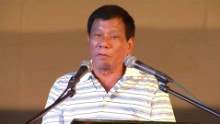












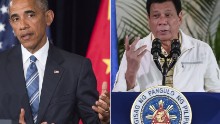
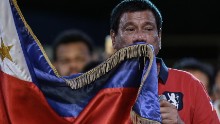

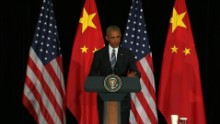

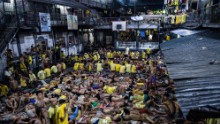




No comments:
Post a Comment